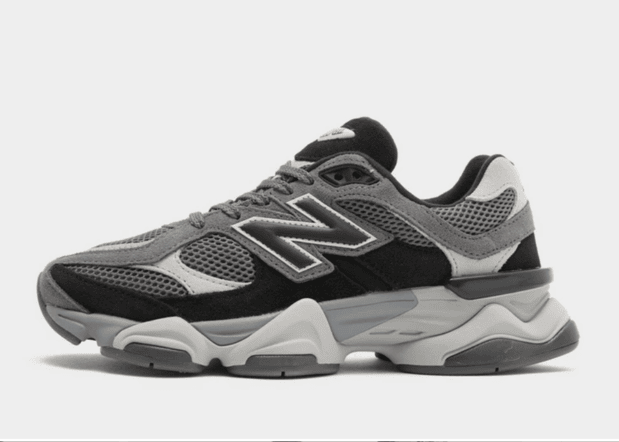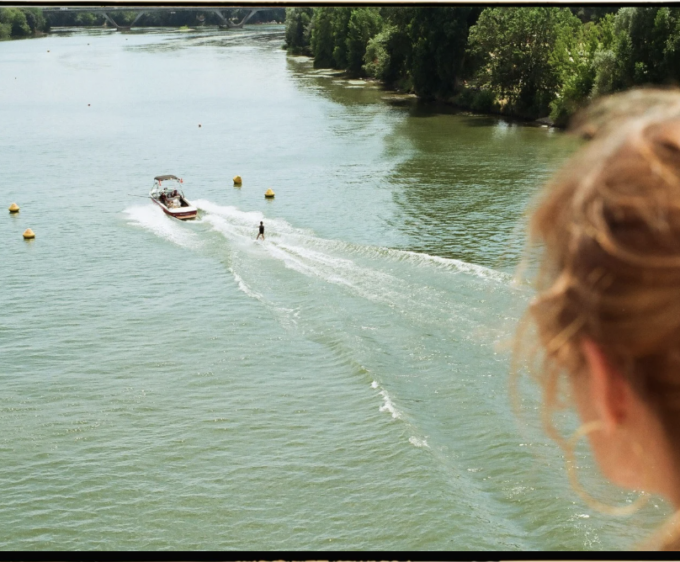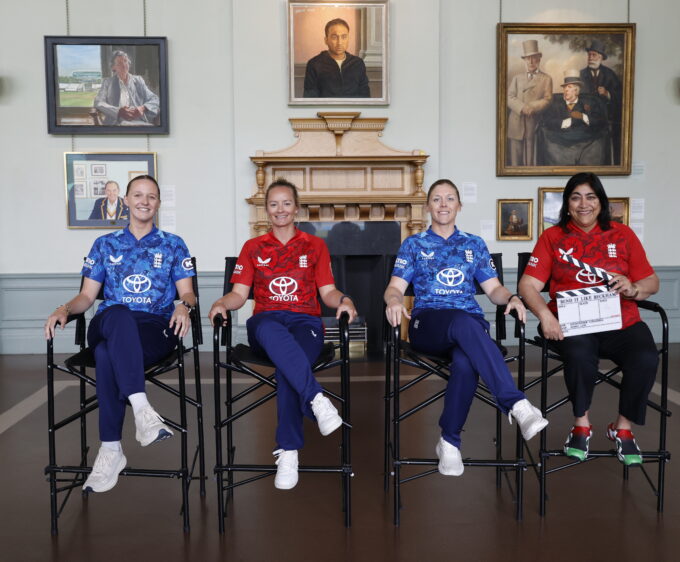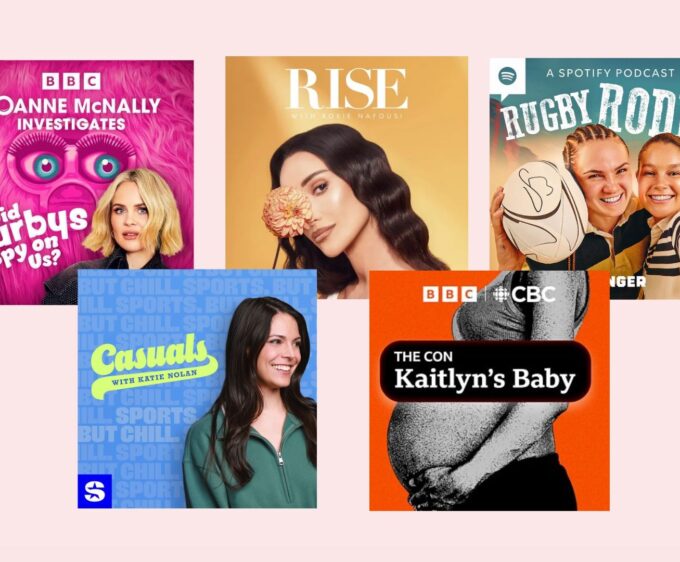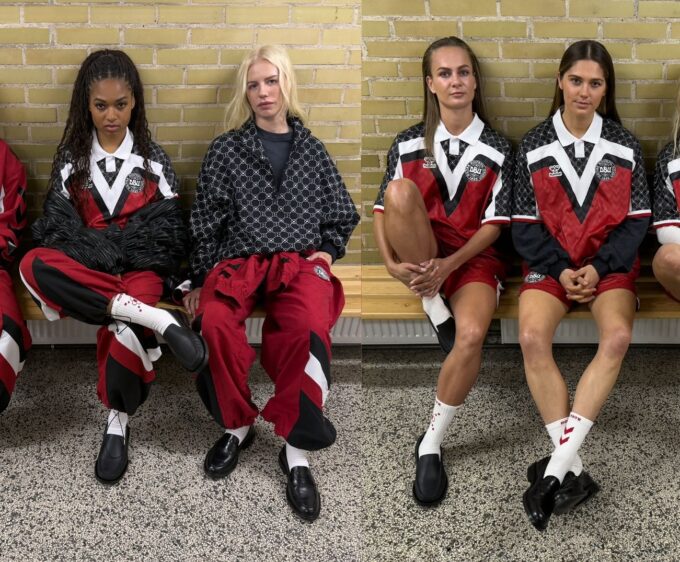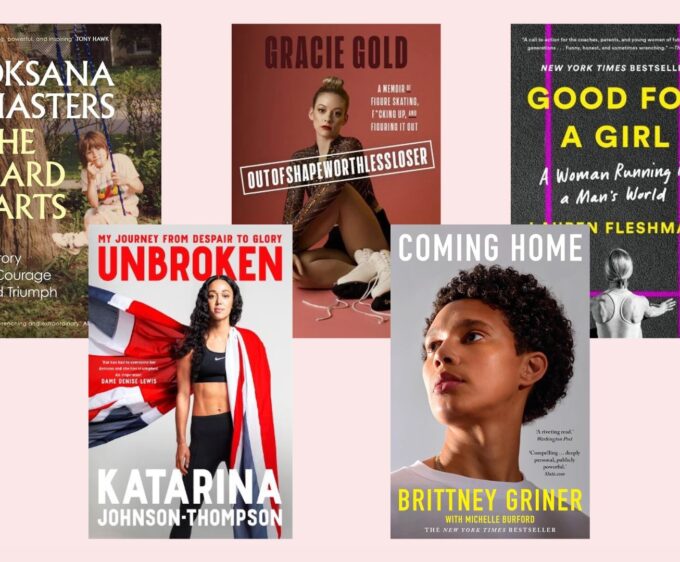
In Conversation With Artist Joe Cruz
Artist and illustrator Joe Cruz tells Glorious about his inspirations, his passions, and how art can help to reframe women in sport
By Glorious
What North London-born artist Joe Cruz does can only be described as alchemy; poring over vintage photographs, film stills and found imagery to find that one perfect image that speaks to him, then giving it a whole new life in his studio. Using skills from his background in traditional printmaking, he plays with the image and injects his own expression via paint, pastels, texture and cropping, reimagining the original through a surreal, dream-like lens; changing not only the image but the way we see it. Whether commercial or personal, small or large scale, his projects all capture his natural instinct for colour and reflect his energetic personality. As he tells Glorious, “The way I make work is very physical. I lead photo shoots like high-adrenaline workouts.”
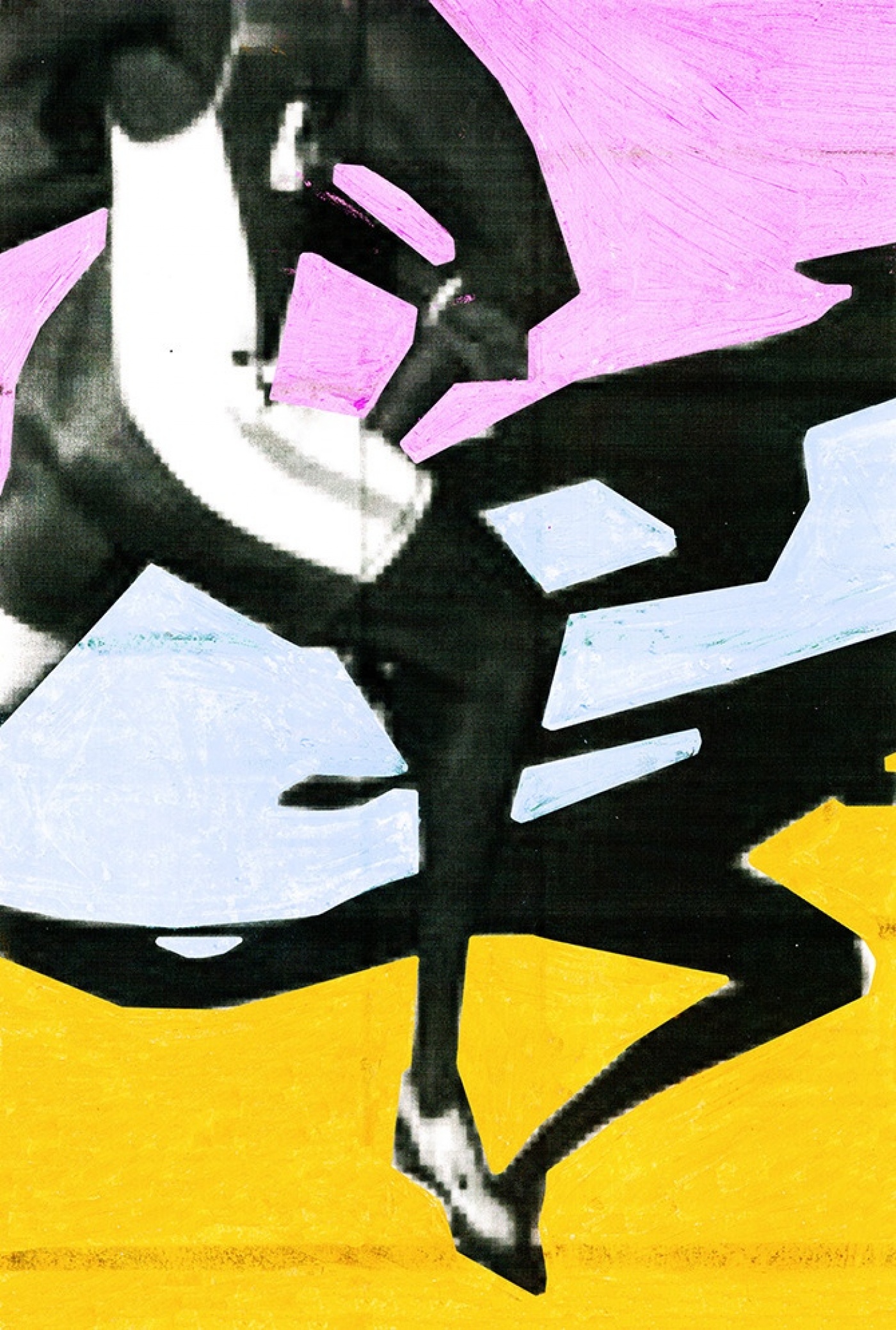
Glorious (G): Which artists have influenced your work? Joe Cruz (JC): That’s a big question! I can’t identify one thing, but I definitely have core influences and artists I always go back to. As a teenager, I would always go to charity shops and boot fairs in my local area and was fascinated with old books, comics and prints. So I’ve constantly found inspiration from charity bookshops and libraries. I’ve recently been collecting movie-star books from the 1950s, filled with highly saturated, slightly off-set images of the celebrities of the day. They are imperfect and tattered, but you get a connection to the past, and it inspired me to interpret these moments in my own visual language.
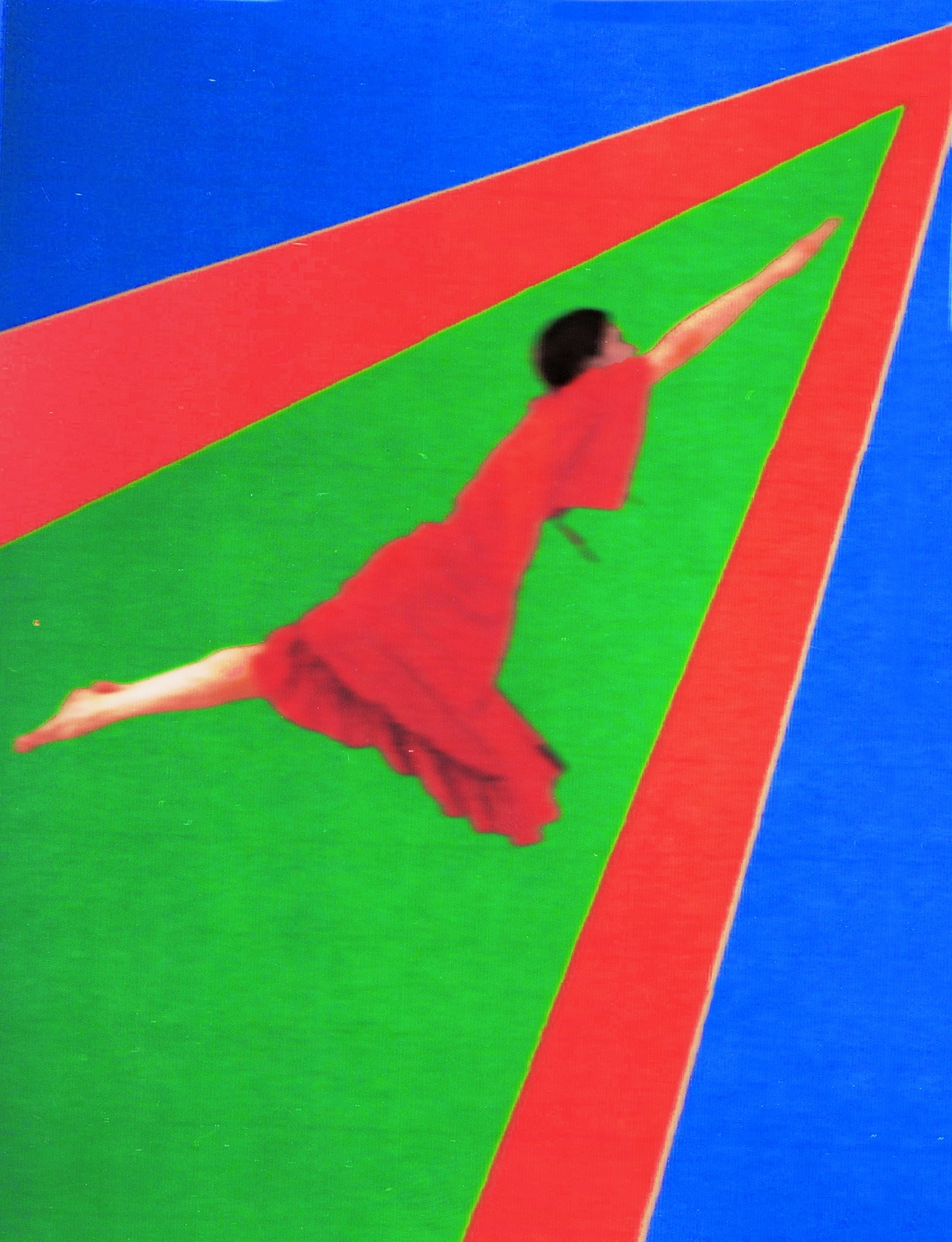
G: What is the process for a new piece? JC: My creative process always starts with an image. I’ll source images in one way or another: photography, films from YouTube, scanner photography, TV film stills, or I simply use my phone. I always print the images out because it’s important that the work has a tactile quality I can play with. My background in printmaking has definitely informed my working processes, which often replicate or emulate traditional printmaking. Even the scanner photography feels more like printmaking to me than photography. The way the scans reveal themselves in motion across the digital screen mirrors exposing and printing silk screens. It’s very important that the work exists in the physical realm, and not just digitally, so I can inject my expression into the works (by applying soft pastels and/or paints, or through layering, cropping and re-printing).
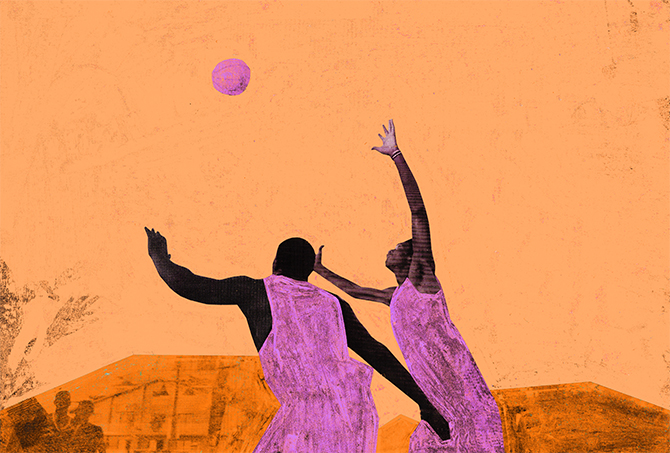
G: Who is currently inspiring your work? JC: Francis Bacon and Pierre Bonnard because of their use of colour, and William Henry Fox Talbot’s print and process.
G: We love the experimental nature of your work – using a scanner to create the imagery, pushing the boundaries of photography and embracing technology. Is this technique something that you are continually developing? JC: I’m always looking for new tools to capture images. I often source redundant office equipment, buying cameras, scanners and photocopiers from places like Gumtree and eBay. The challenge is finding new ways to utilise these tools, pushing my practice and finding a new aesthetic that also has a tactile sensibility.
G: You combine found images with distorted use of colour. Where do you find these images and how do you choose them? JC: I usually source my images from watching home movies on YouTube – there is such an absolute abundance of imagery out there. I watch hours of footage for that one moment that connects with me, and then crop and apply colours and textures.
G: Apart from found imagery, do you shoot images yourself? JC: Yes, I often shoot, particularly when shooting fashion and editorial projects.
G: How does this process differ creatively from using found images? For example, does it give you more control/creative scope? Does it feel more of a fast-paced, immediate process? JC: I run photo shoots like high-tempo workouts – they are very energetic and immediate. I love working in this way, as when I am constantly pushing the tempo higher, ideas emerge. I like entering these events without a predetermined visual aesthetic and letting the images emerge on the day.

ENERGETIC
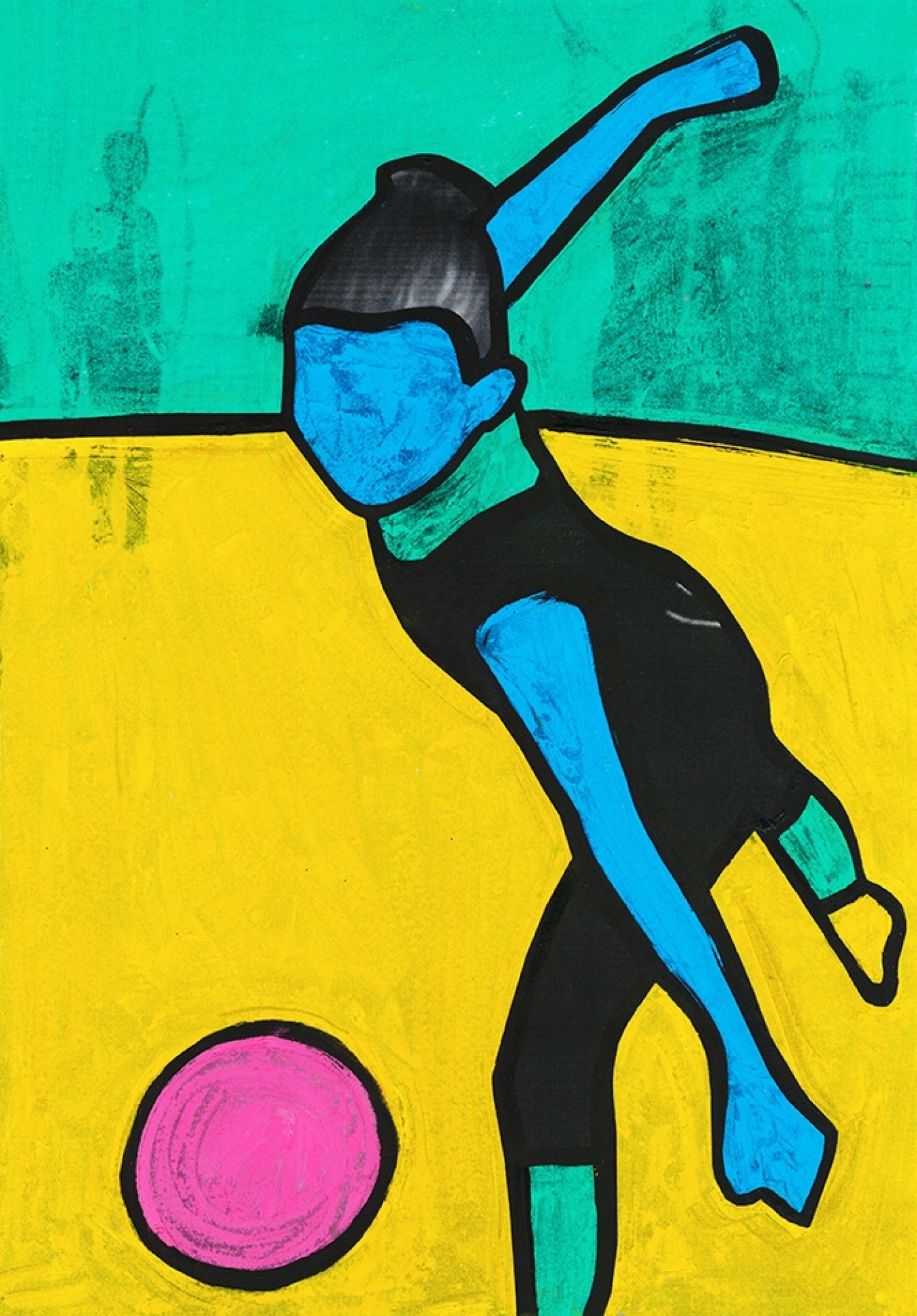
G: How does the creative process differ when working with a commercial client rather than on personal projects? JC: It’s all really dependent on the project. Often when I make a new personal series, I play and look for a method to create an artwork incorporating new techniques and tools. With all my commercial work, the client has usually seen something I have created in my personal works and wants me to replicate that particular style.
G: We love how you are able to take a sometimes quite subdued, often black-and-white image and transform it by adding your own bold or colourful marks that completely change the way we view the original image. Have you always been drawn to vivid colours? What role does colour play in your work? JC: I have never been overly conscious of colour in my work; it’s very emotive. I always start with an image and respond to that image with colour and texture, whether this be layering prints, applying pastels or re-scanning the image.

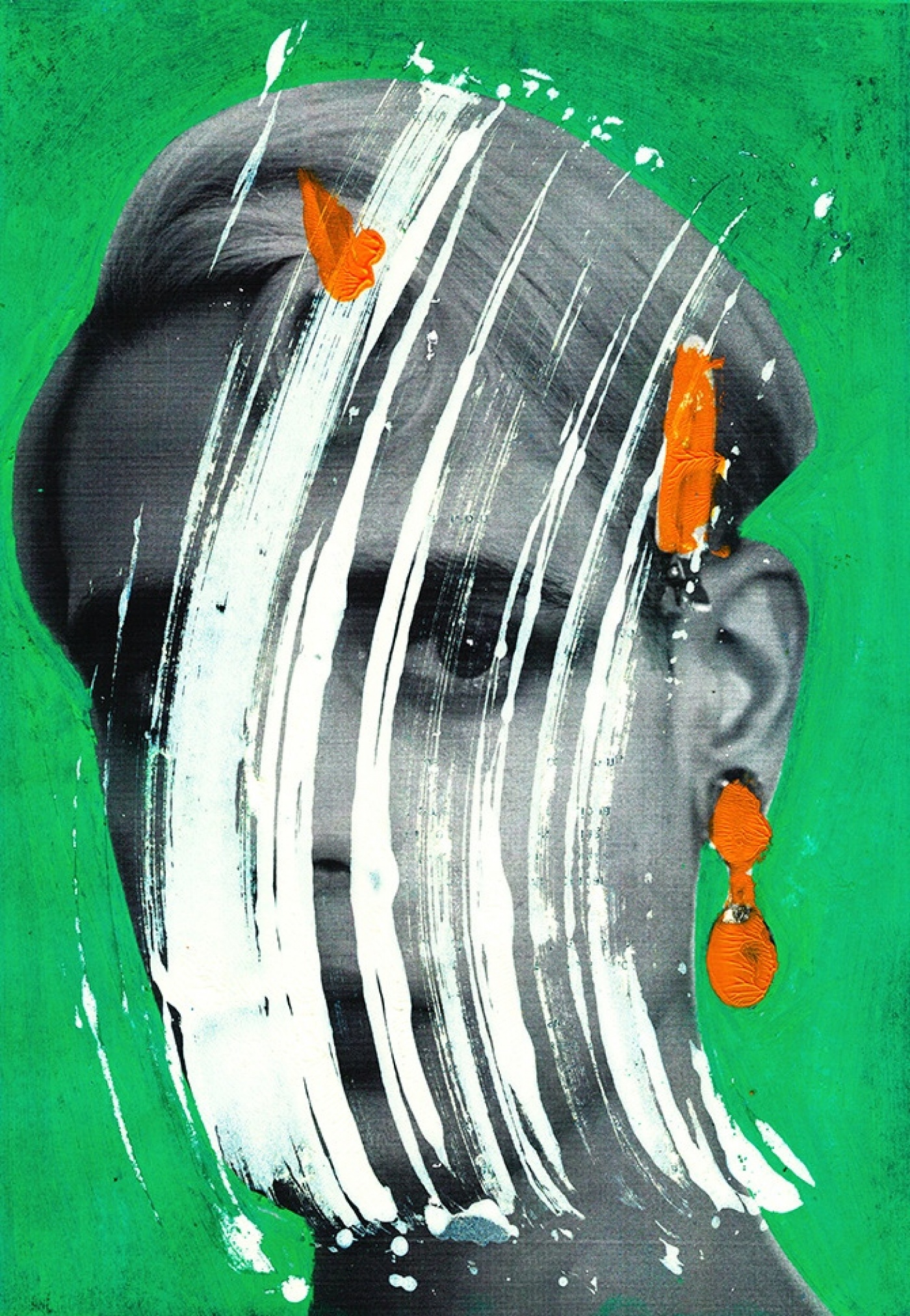
G: Your large-scale work for the Olympic Stadium in Amsterdam works perfectly. What was it like creating at this size? JC: I loved it, I have always been fascinated with prints and paste-ups. It’s really enjoyable and fun to create an artwork at A4, then see it be placed on the side of a stadium. I feel my work lends itself to a large scale – I have always been inspired by poster art, advertising campaigns and political propaganda, making bold, simple and direct work.
G: Do you play and/or follow any sports? Does sport and being active feed into your work? JC: I do. I have always been very sporty and hyperactive – as a child I played football, swam and did trampolining. Throughout my teens and early 20s I competed in karate until a bad knee injury forced me to stop. I feel that the training and discipline instilled into me from my karate practice has fed into my work. Karate, like art, is a practice; you are constantly learning, improving, evolving.
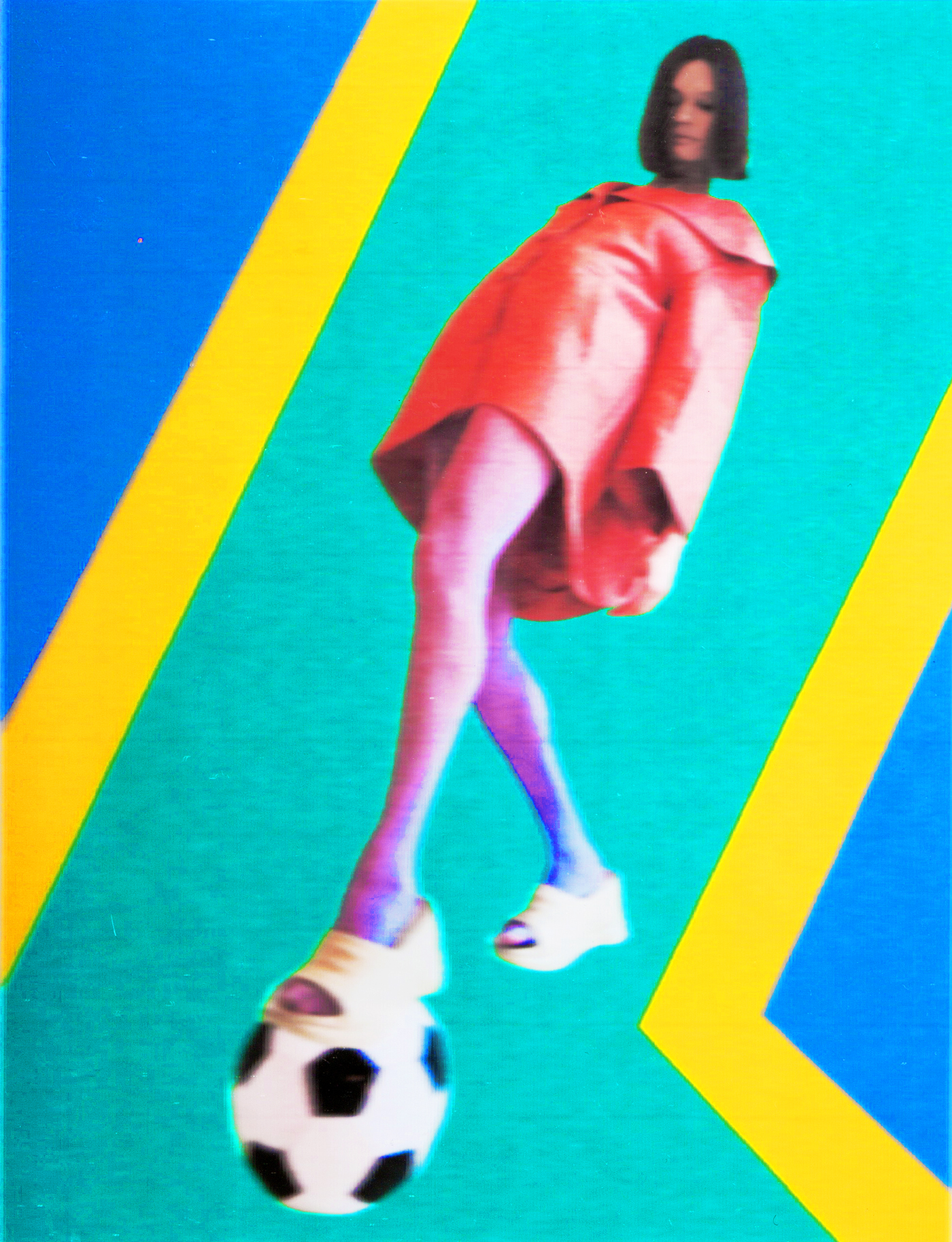
G: Please can you tell us about your work for Robyn Lynch and her Rapha collection? JC: I first saw Robyn’s work in around 2018 and instantly fell in love with her sporty, graphic, playful garments. We worked together during the first lockdown, during which time there was no shooting, which made the collaboration limiting, but these limits proved rewarding. I visited Robyn’s studio with only my hand-held scanners and documented everything. From this assortment of images, we created the look-book for that season.
G: How do you think art can elevate women’s sport? JC: Art is very powerful. Images can challenge perceptions and provoke new ideas, so can obviously elevate the status of women’s sports. We are seeing more and more artworks and fashion shoots where women’s sports are framed in uplifting, aspirational, powerful ways, and less sexualisation of their bodies.
G: Do you collect any other artists’ work? JC: I do sometimes and it’s something I would like to do more of. I have bought pieces by artists Rachel Louise Hodgson and Sadie Williams. I like the physical nature of their work, both are very tactile and have a weight to them.
G: What’s next for Joe Cruz? JC: I am working towards a solo show in Paris later this year, and finishing a satirical postcard book. I want to incorporate my scanner techniques into a security style passport control, where participants are asked to stand still, look at the camera, and hold their breath. From this, we will create an abundance of images with all the same structure of portrait and present them in a gallery. I want it to be very inclusive and interactive, having fun with procedural aspects of lockdown and all the current restrictions.
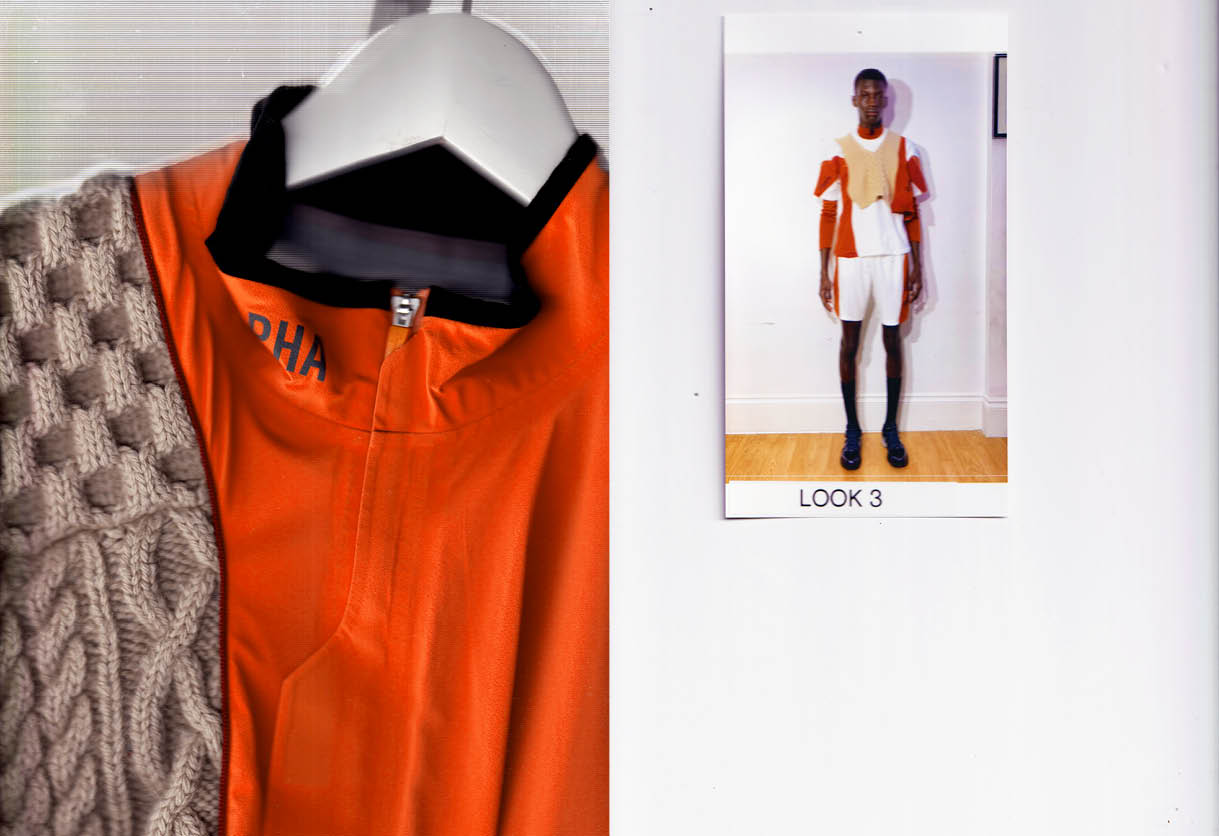
INTERACTIVE
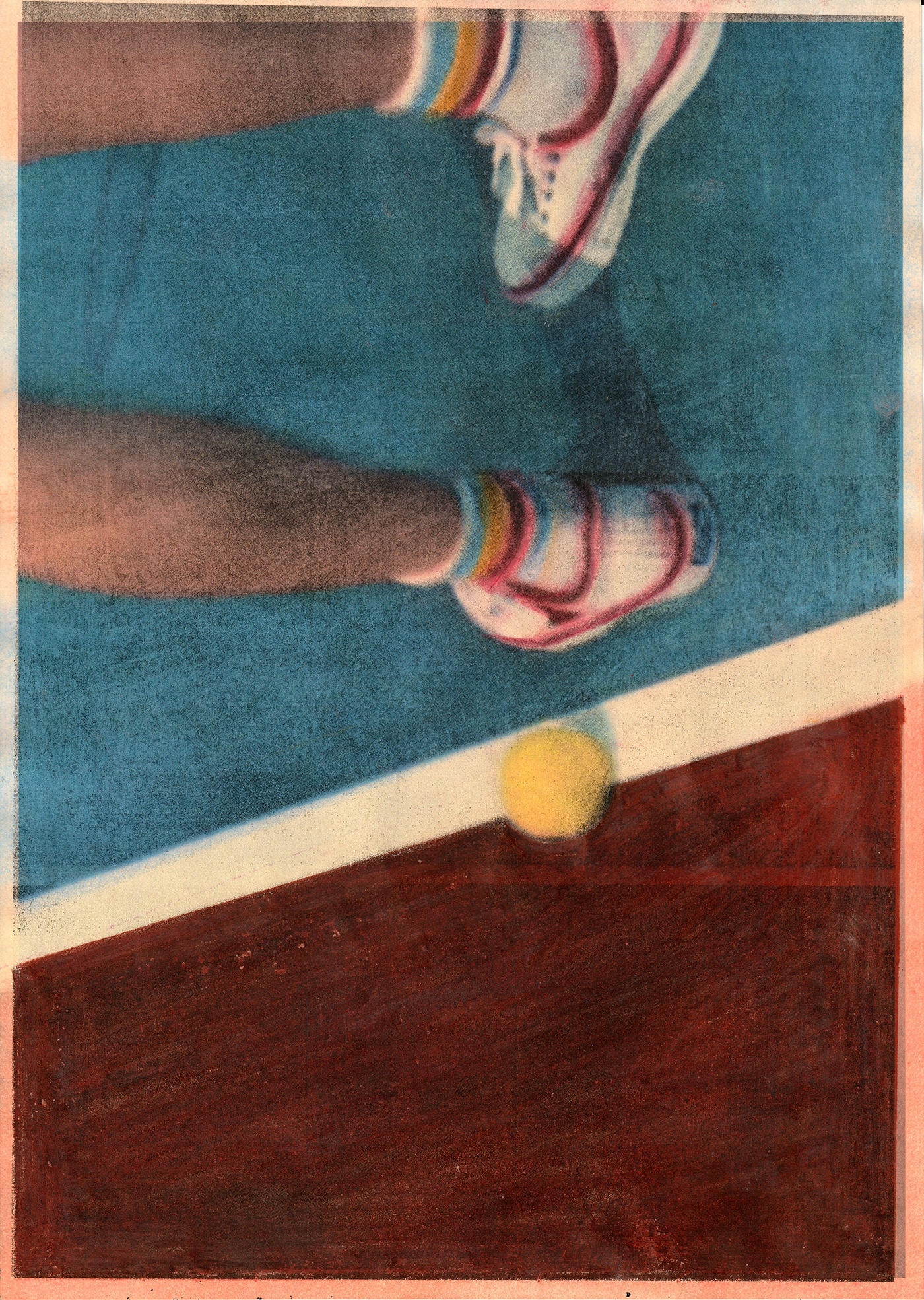
G: Do you have a dream project? JC: The dream would be to do a show at somewhere like the Tate, or another similar institution. It would be amazing to see my work on a massive scale in an internal setting.
G: Where can we find you? JC: jcruz.co.uk and @joecruzstudio
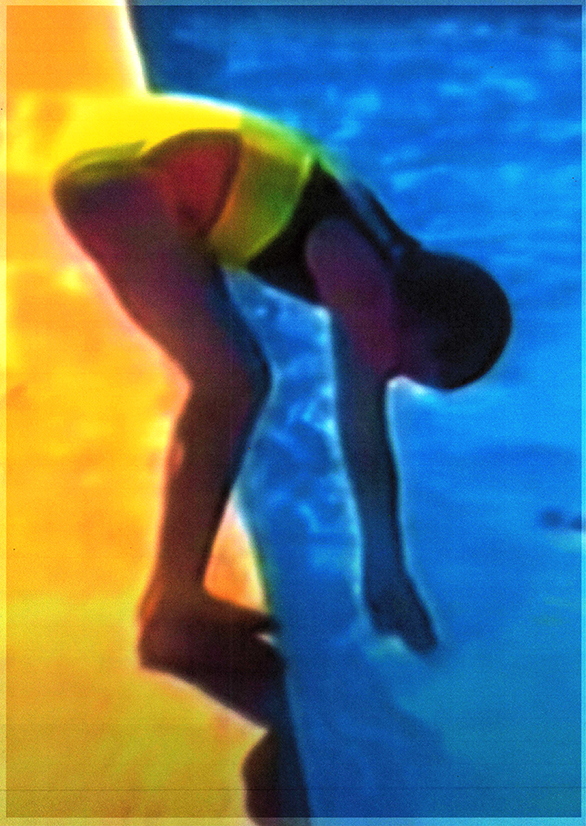

Editorial Design Root
